|
Manchester Art
Gallery
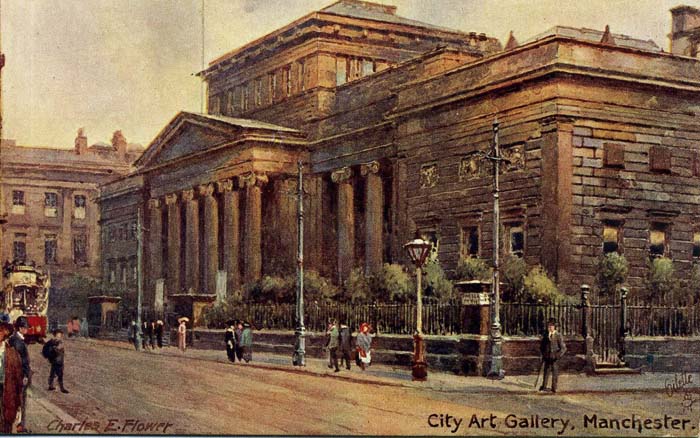 The Manchester Institution for the Promotion of Science Literature and the Arts invited 6 architects to submit plans for a building in Manchester to be known as the Royal Manchester Institution. 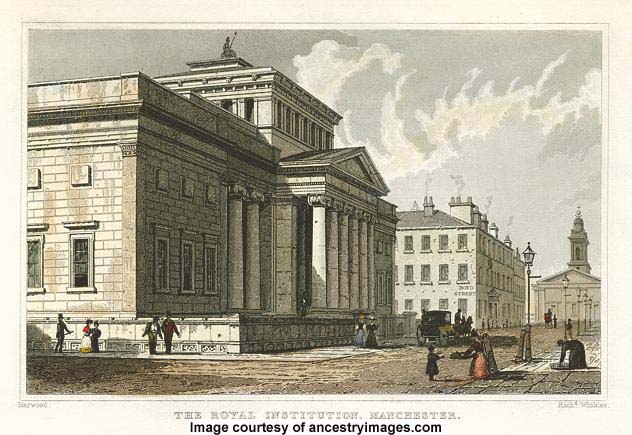 Charles Barry, the architect of the Athenaeum Club and London's Palace of Westminster won the competition. Barry's submission had the motto "Beauty is nothing without utility". The foundations were laid in 1827 ten years before work started on the adjacent Athenaeum Club. 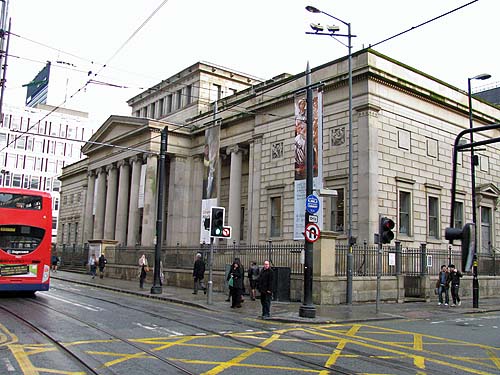 John J
Parkinson-Bailey, in "Manchester an Architectural
History", describes the building as follows: ".he
deep portico is carried on six plain Ionic columns,
and, as if to emphasise its depth, the three bays on
either side are set back and fronted by a pair of
Ionic columns in antis." The building was virtually
completed by 1835.
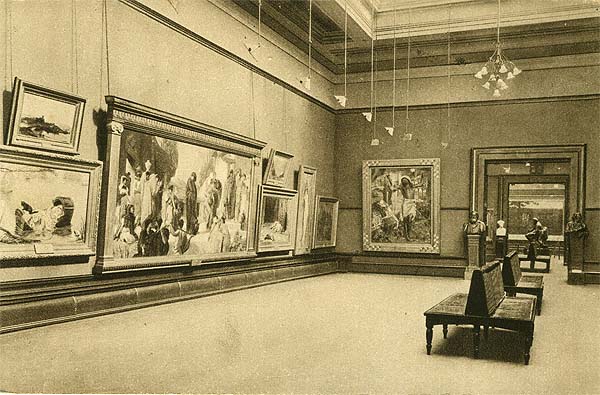 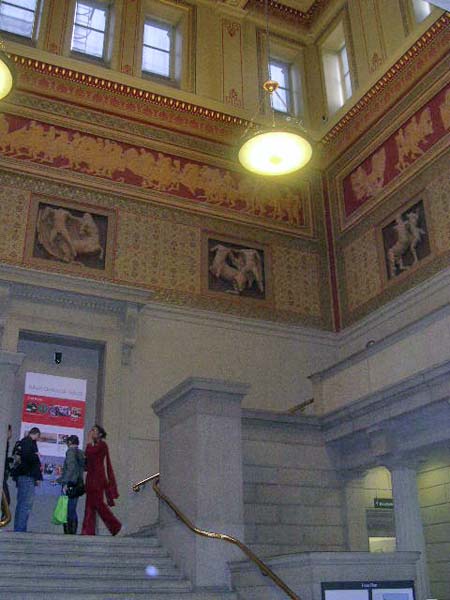 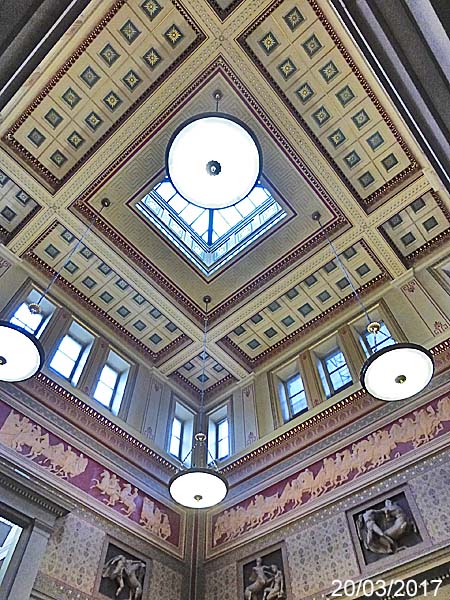 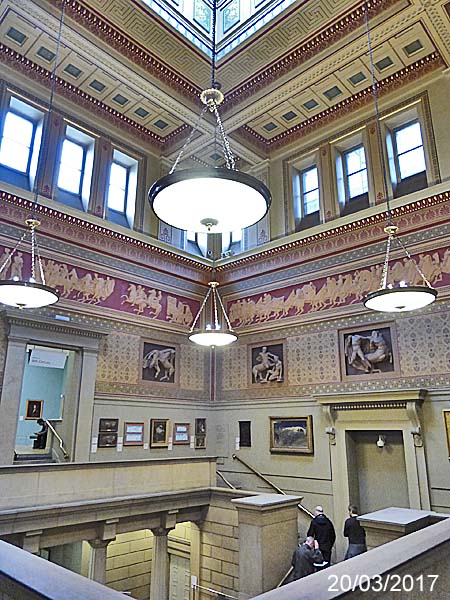 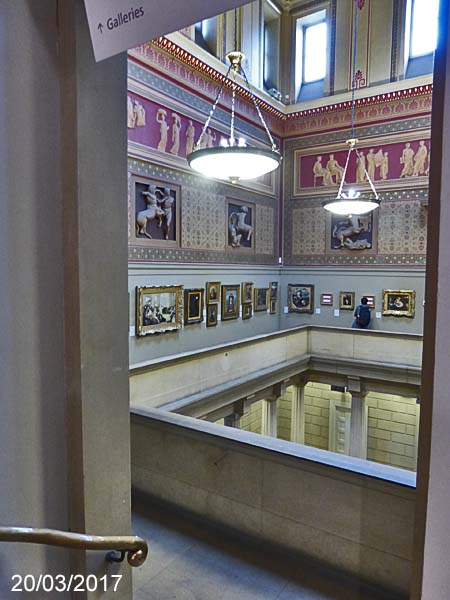 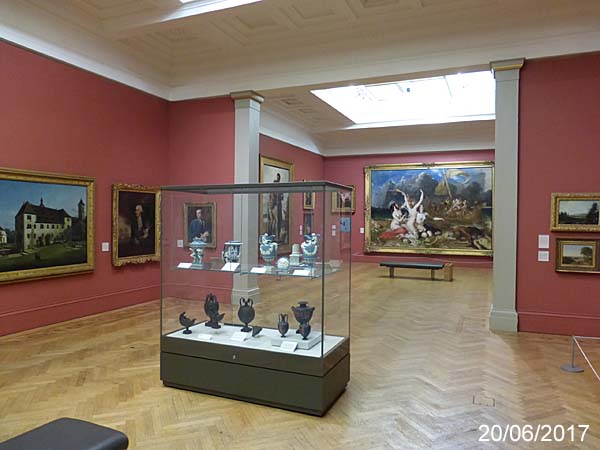 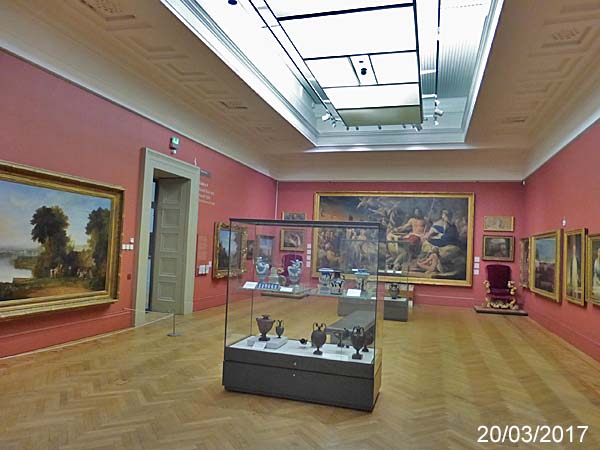  In 1882 the building was donated to Manchester Corporation on the condition that they spend £4,000 a year on adding to the collection. In 1998 the gallery closed to facilitate a long awaited extension.. All of the artworks were removed and placed in storage. The architect Sir Michael Hopkins created a new glass atrium (see below) to link a new wing with the former City Art Gallery and Athenaeum. These existing buildings were cleaned and refurbished, bringing new areas of the Gallery into public use for the first time. The new Manchester Art Gallery re-opened to the public in May 2002. 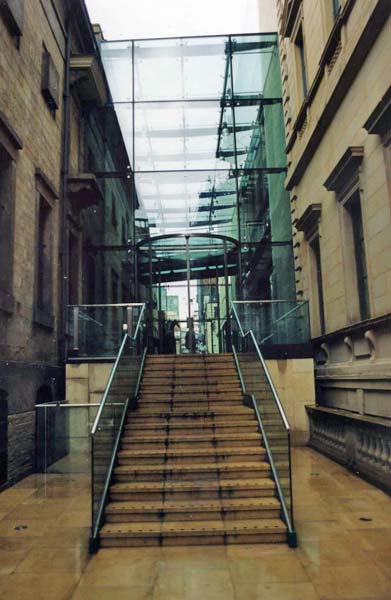 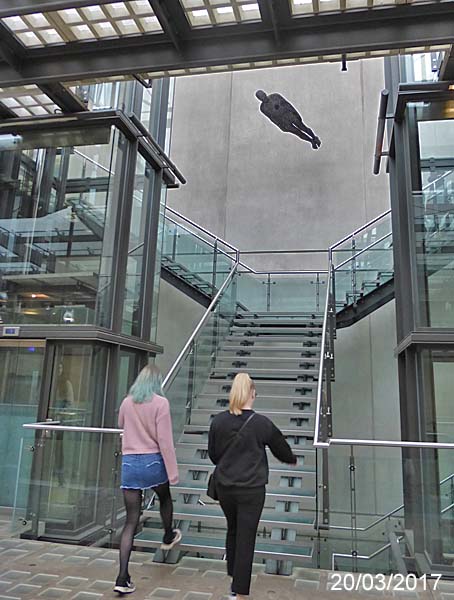 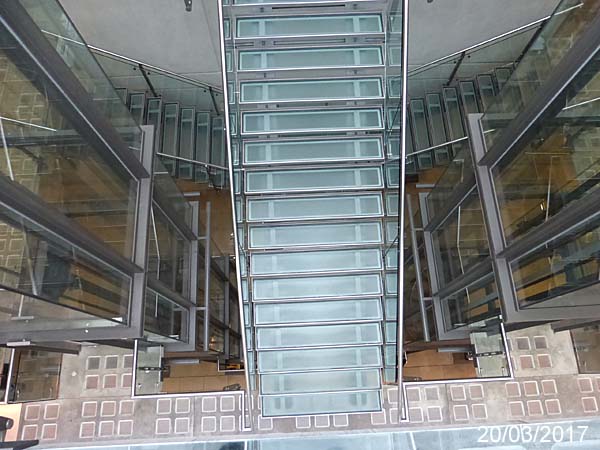 **************************** In April of 2024 I visited the
Art Gallery and its extension in the
Athenaeum. Here are some images from that
visit.
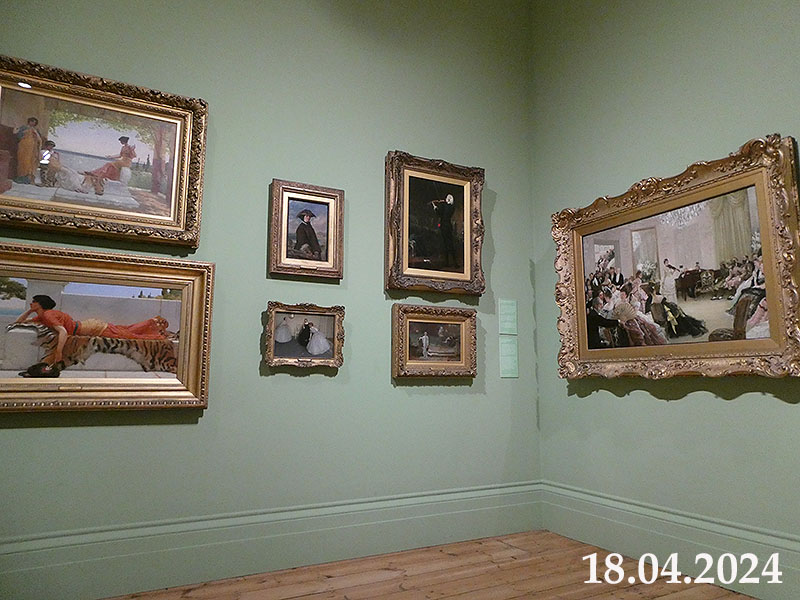 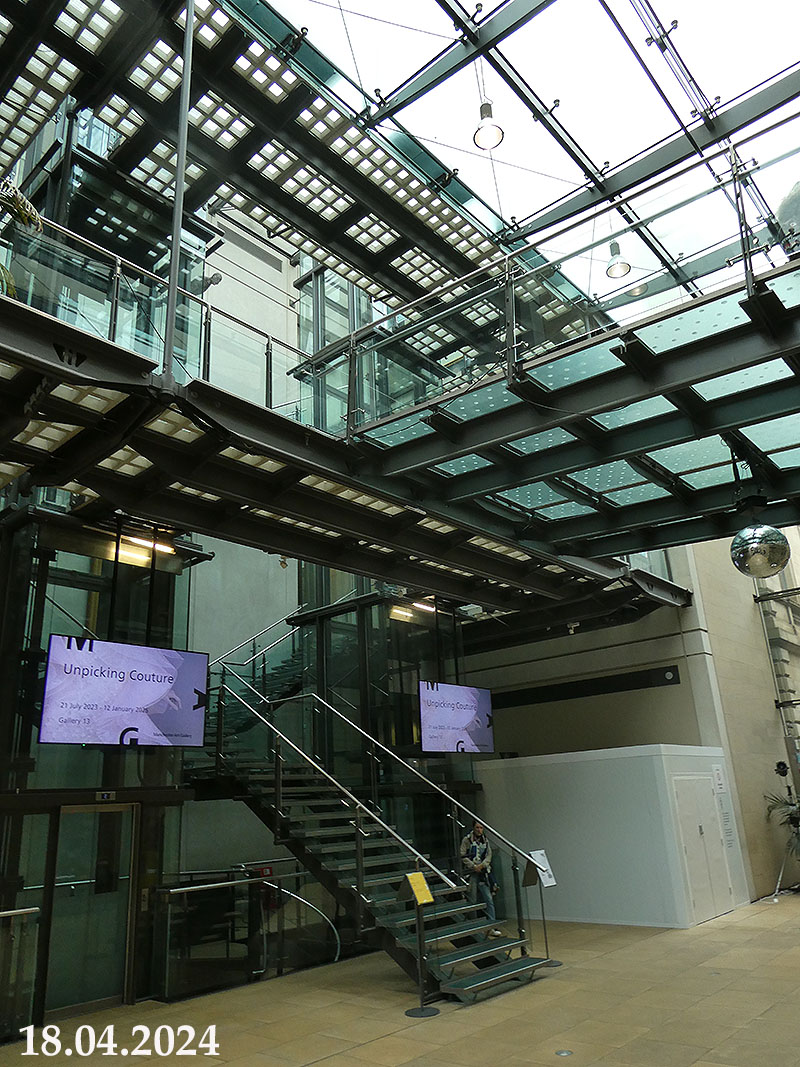 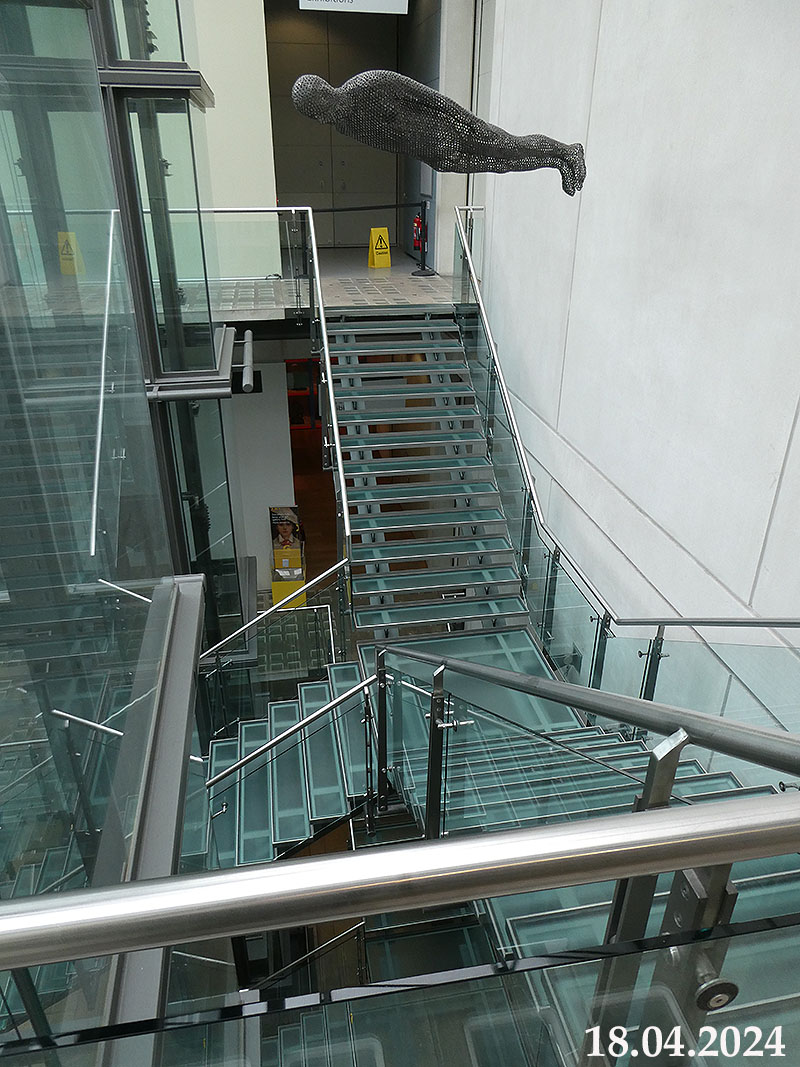 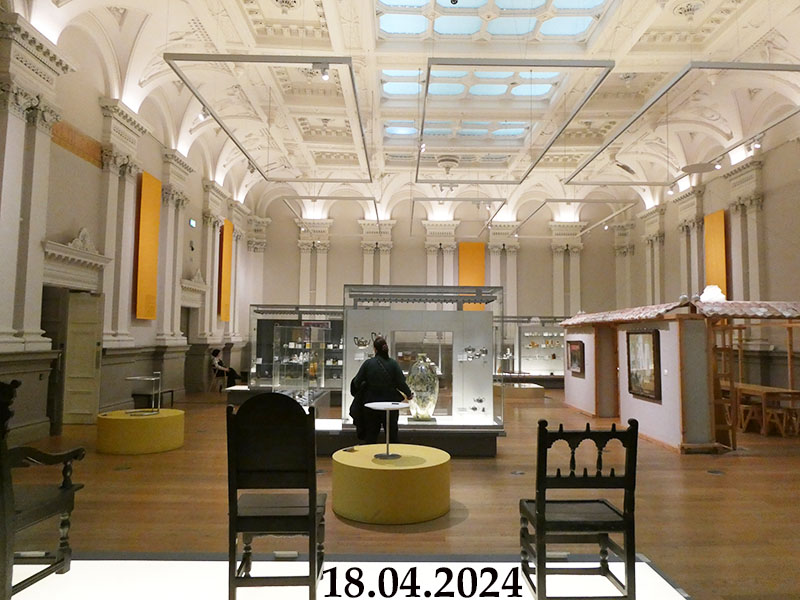  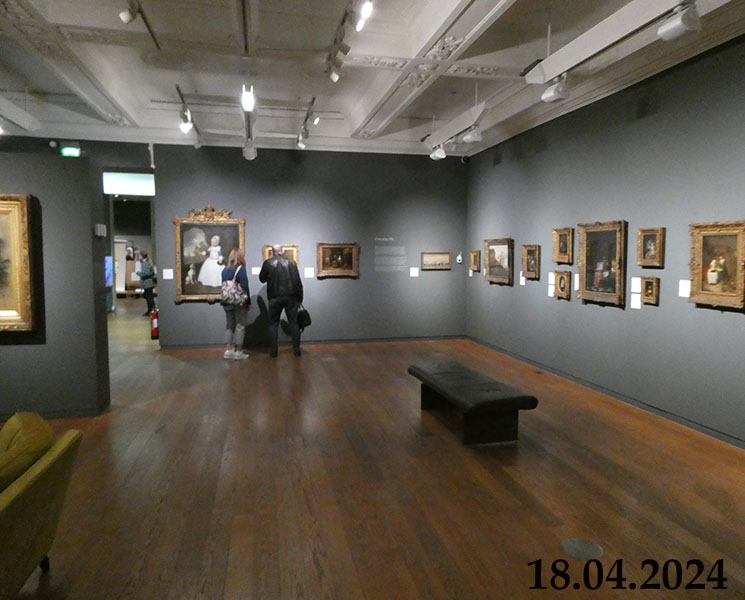 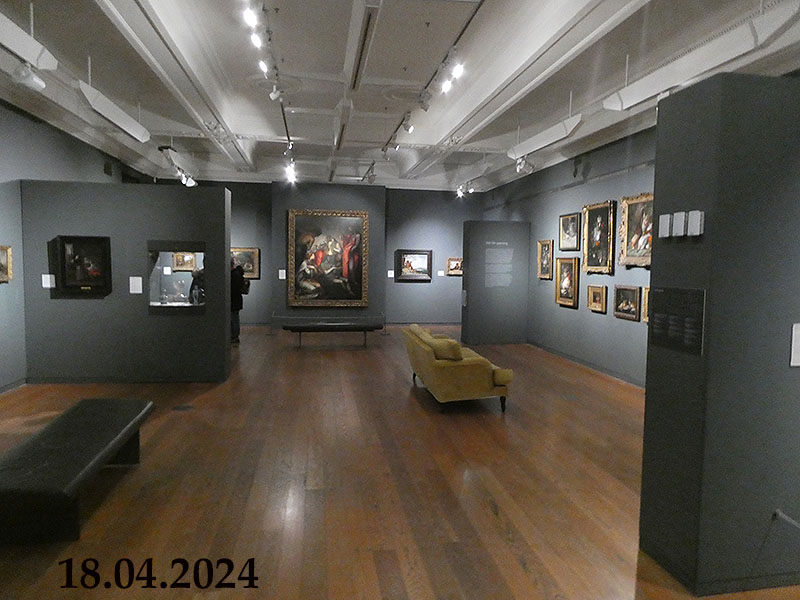  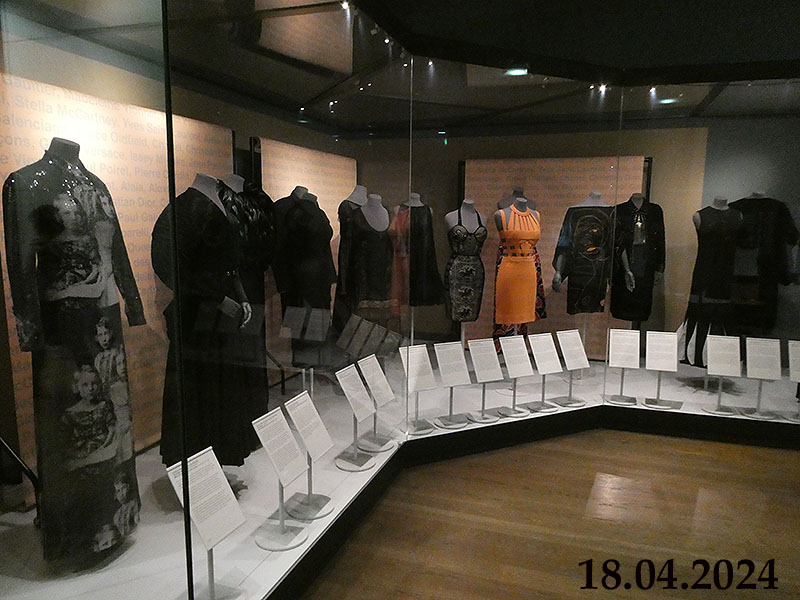 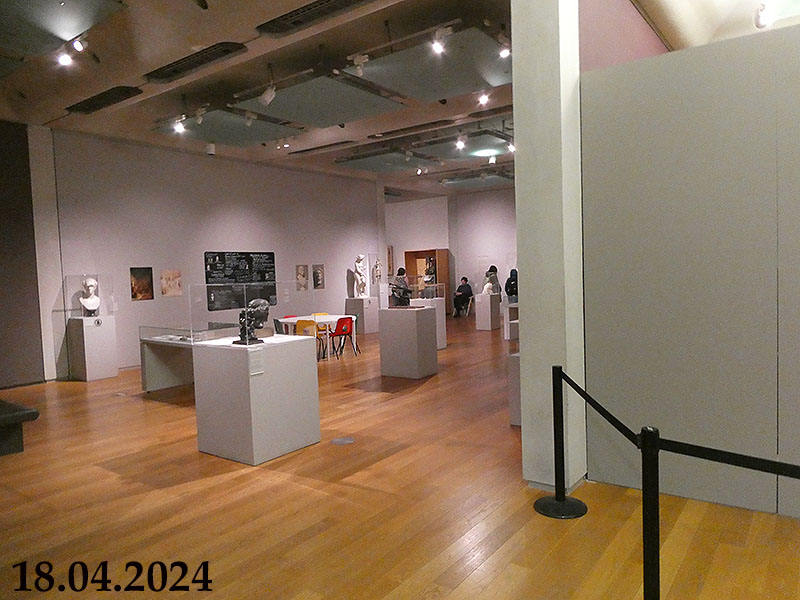  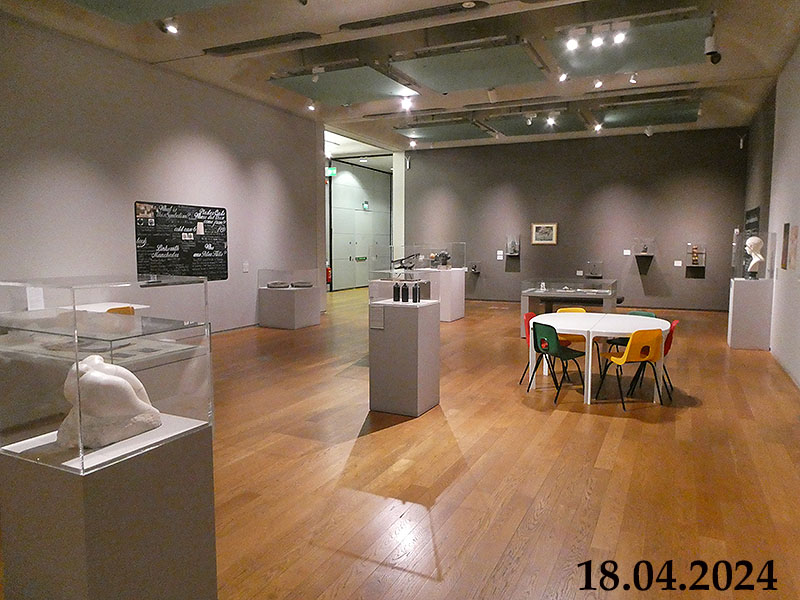 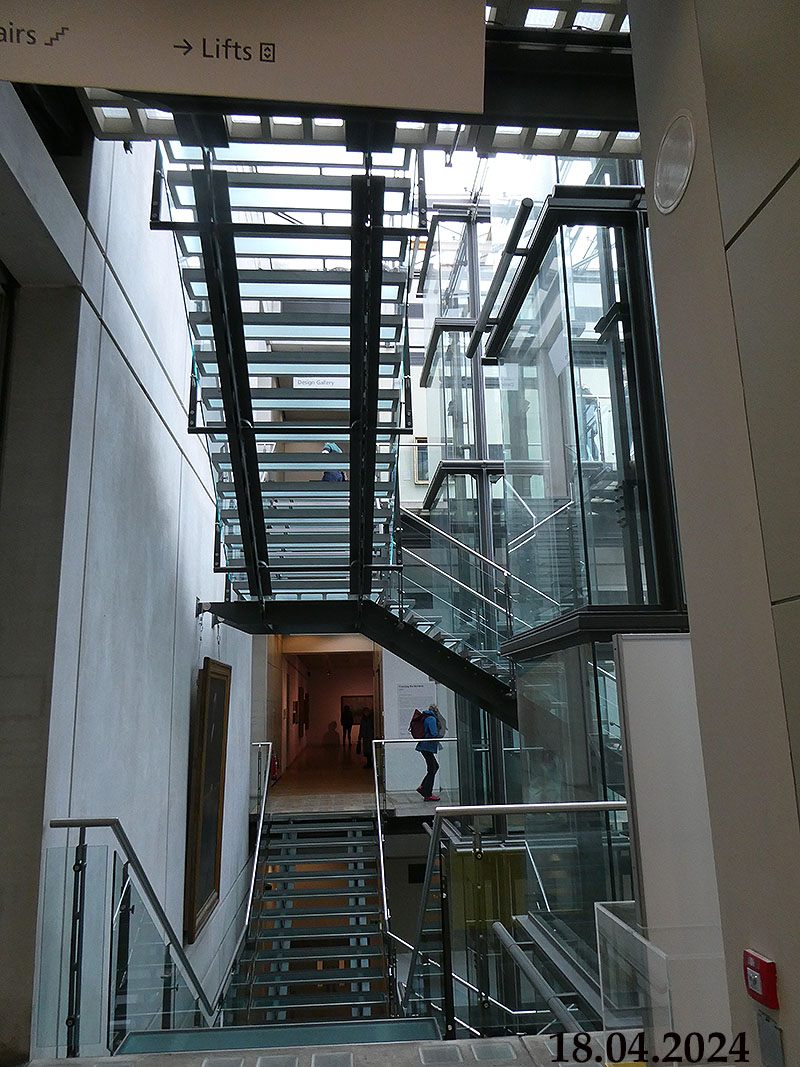 Close Window |